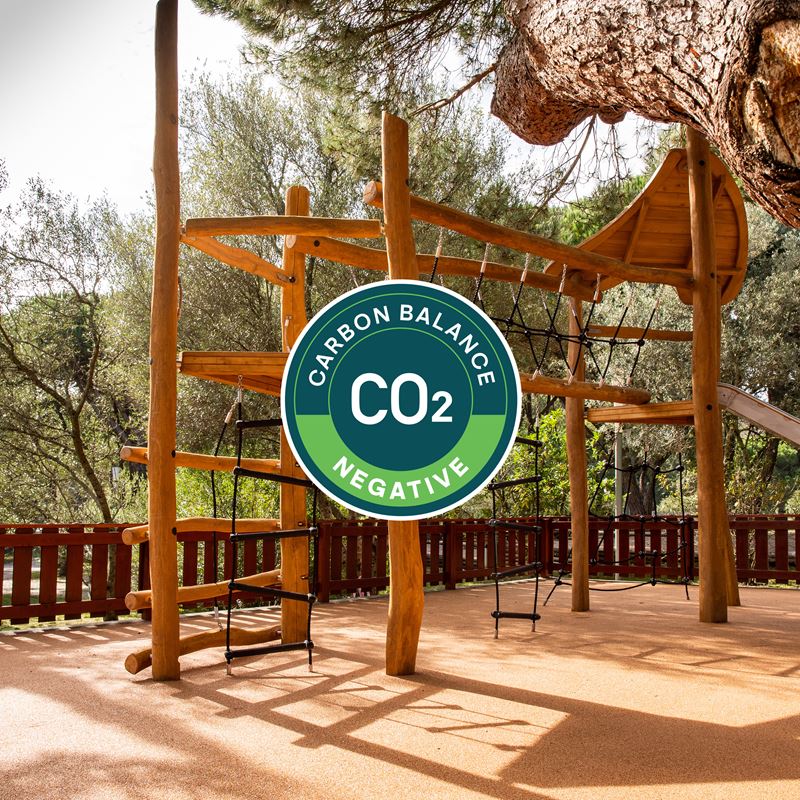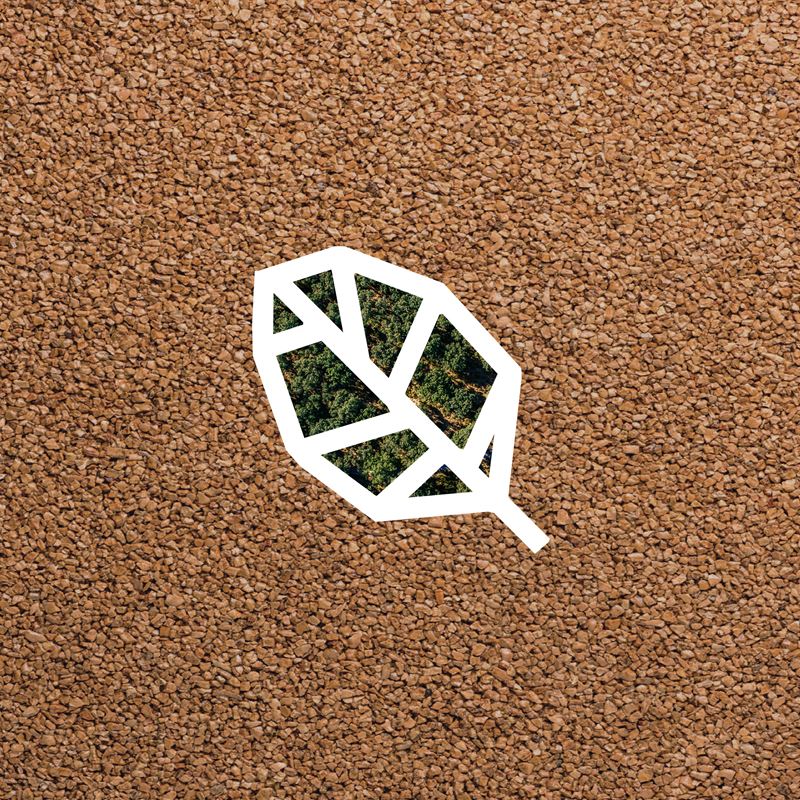Corkeen has a negative carbon balance
The carbon balance of the Corkeen system is -102kg CO2 eq/m2 NewsThe Environmental Footprint study, conducted by EY, according to a Life Cycle assessment, which also considers the carbon sequestration of the cork oak forest, was based on the cradle-to-gate approach. That contemplates the environmental impact of all activities, from the extraction of raw material, through the production of all components to the factory gate, and included the expedition phases and on-site installation of the system.
The carbon balance of the Corkeen system, a revolutionary impact-absorbing surface solution for play, leisure and recreational spaces, is -102kg CO2 eq/m2. This means that the Corkeen system promotes carbon sequestration in the cork oak forest that exceeds the CO2 emissions from its production.
The Environmental Footprint study conducted by EY, according to a Life Cycle assessment, which also considers the carbon sequestration of the cork oak forest was based on the cradle-to-gate approach, that contemplates the environmental impacts of all activities, from the extraction of raw material, through the production of all components to the factory gate. It also included the transportation stages and on-site installation of the system. The analysis considered the fact that the Corkeen system, designed by Amorim Cork Composites - Corticeira Amorim's Composite Cork business unit - is installed in situ, as a two-layer system (the bottom layer at the base, for impact absorption, complemented by a wear-proof top layer).
-
Made from cork - a 100% natural, recyclable and renewable raw material - Corkeen has strong safety, accessibility and sustainability credentials, and combines the concepts of Community, Nature and Planet. Developed in accordance with circular economy principles, the innovative Corkeen system incorporates waste resulting from the cork industry. The energy used for its production derives primarily from the use of biomass (cork dust).

-
The fact that it is installed in situ, as a two-layer system, enables it to preserve its unique attributes. Even after years of use, the Corkeen surface has excellent drainage capacity. It can lower the surface temperature by more than 20% compared to other synthetic solutions, and offers state-of-the-art technical performance, in compliance with strict safety standards (EN1176 and EN1177).
The Corkeen system is weatherproof, easy to maintain, rot-proof, flame-retardant, and also reduces the spread of microplastics. The cork used in its composition is completely free from contamination by any type of chemical products, in particular by heavy metals, EDC, VOCs, formaldehydes or HAPs.

“The Corkeen system helps reduce CO2 emissions into the atmosphere and fosters a greener, healthier and more sustainable Planet. (...) These Environmental Footprint studies demonstrate Corticeira Amorim's continuous commitment to further the tremendous contribution made by the cork oak forest, and the entire cork sector, through in-depth, validated and certified research in this field, in response to climate change.”
The methodology of EY's studies was based on the ISO 14040/44 standards, complemented by the guidelines of the International Reference Life Cycle Data System (ILCD). Production-related data was provided by Amorim Cork Composites. Data for general production processes associated with the production of raw materials, energy, transport and waste management was obtained from the Ecoinvent 3.5 database.